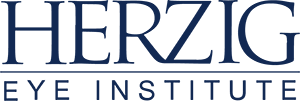What is Refractive Lens Exchange (RLE)?
Refractive Lens Exchange (RLE) is an intraocular procedure (inside the eye) identical to cataract surgery, but with no cataract present. Unlike laser vision correction, which reshapes the cornea, Refractive Lens Exchange changes the focusing power of the eye by replacing the eye’s natural lens. The natural lens is replaced with a thin intraocular lens (IOL) to provide good distance vision, good reading vision, or both.
An advantage of having a Refractive Lens Exchange (RLE) procedure is you will not develop a cataract later on in life. RLE is an excellent procedure for patients over the age of 40, because it can correct Presbyopia (loss of reading vision), nearsightedness (myopia), farsightedness (hyperopia), and astigmatism.
With the advanced IOL options available today, your vision at all distances – near, intermediate, and far – can be corrected and provide a continuous range of vision. While many IOLs can provide excellent vision at a continuous range, sometimes glasses are required for specific tasks like reading a prescription bottle or the newspaper.
RLE Candidacy & Treatment Alternatives
During your comprehensive consultation, you will undergo diagnostic testing and meet with an eye doctor to determine your candidacy for the Refractive Lens Exchange procedure. To understand what lens might be right for you, you will meet with one of our experienced doctors to discuss your vision goals and share the results of your diagnostic tests and eye examination. Then, you will meet with one of our Refractive Consultants to answer any questions you might have, book your procedure date, and discuss any pre-operative considerations and instructions.
Refractive Lens Exchange is typically recommended for patients over the age of 40 who are looking to be free from glasses. There are many different intraocular lens (IOL) options which will be discussed in more detail with your Refractive Consultant. A thorough lifestyle assessment is conducted as part of your comprehensive consultation, to help determine your candidacy for various IOLs.
Alternatively, we also offer many procedure options to correct Presbyopia, the loss of reading vision, with laser vision correction.
Intraocular Lens (IOL) Options
Monofocal IOL
- Provides high quality vision at one focal point – usually distance.
- May be combined with monovision.
Monofocal+ IOL
- Provides high quality vision at distance and intermediate, can be combined with mini-monovision.
- Reduced dependency on reading glasses.
Continuous Range of Vision / Trifocal IOL
- Provides the ability to focus at near, intermediate, and far.
- Dependence on glasses is reduced significantly.
Toric IOL (Astigmatism)
- A toric IOL provides the added benefit of correcting pre-existing astigmatism.
- All IOLs have a toric lens option to correct for astigmatism.
Light Adjustable Lens (LAL)
- Delivers superior distance and near vision outcomes.
- Your vision can be optimized after surgery through a series of light treatments.
What to Expect
The pre-operative considerations for Refractive Lens Exchange differ from a laser vision correction procedure because every lens must be ordered well in advance. Because RLE is an intraocular procedure, a pre-operative measurement appointment is required. All of the instructions will be shared with you by your Refractive Consultant and the doctor during your comprehensive consultation. Some of these instructions / pre-operative considerations might include:
- Switching to glasses and refraining from contact lens wear for 1-8 weeks (depending on the type of contact lenses you wear)
- A retinal consultation will be arranged prior to your procedure to confirm the health of the back of your eye (the retina)
- Following the fasting instructions in preparation for IV sedation
- Arranging transportation to and from Herzig Eye Institute for your procedure day
The procedure is quick and painless. Topical anesthetic numbing drops and local anesthesia with IV sedation (fasting is required) will be administered. The surgeon will then gently insert the Intraocular Lens (IOL) and no stitches will be required.
Directly following the procedure, you will be examined by the surgeon. After your examination, it is recommended you go home and rest as you may be experiencing blurry vision, some discomfort, and sensitivity to light. Discomfort is normal during this time.
A medicated drop regimen needs to be followed after the procedure. The drop schedule will be reviewed with you and any questions you have will be answered. Other directions will be provided by your Refractive Consultant, the nurses, and the surgeon on the day of your procedure.
It is critical you are seen for all requested post-operative appointments at either Herzig Eye Institute or with your optometrist. You will be seen 1 day and 3-4 weeks after your procedure, though additional appointments may be recommended.
Through the Eyes of a Patient
To learn more about the Herzig Eye Institute experience, watch these videos through the eyes of patients who underwent their own Refractive Lens Exchange procedures.




